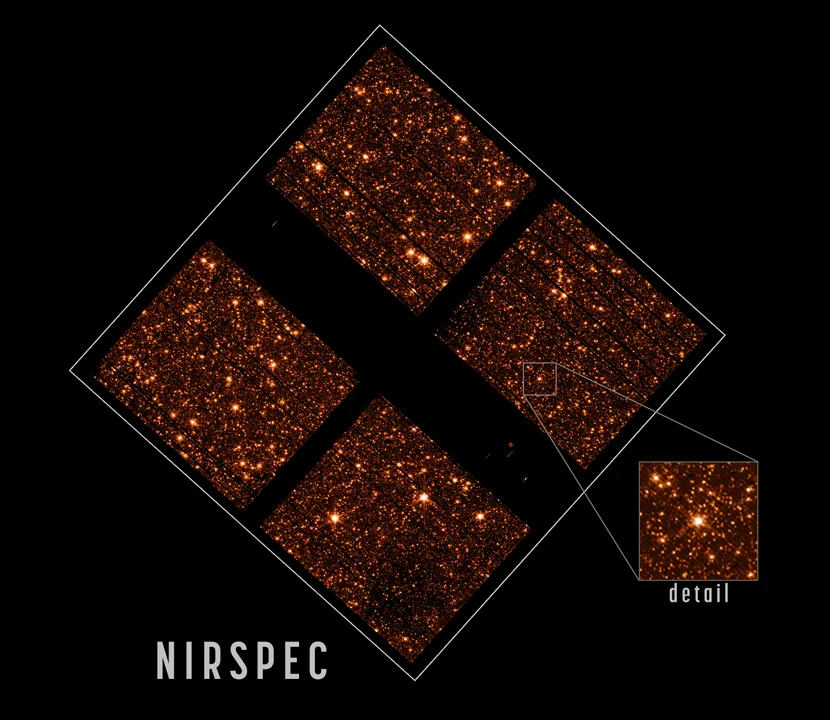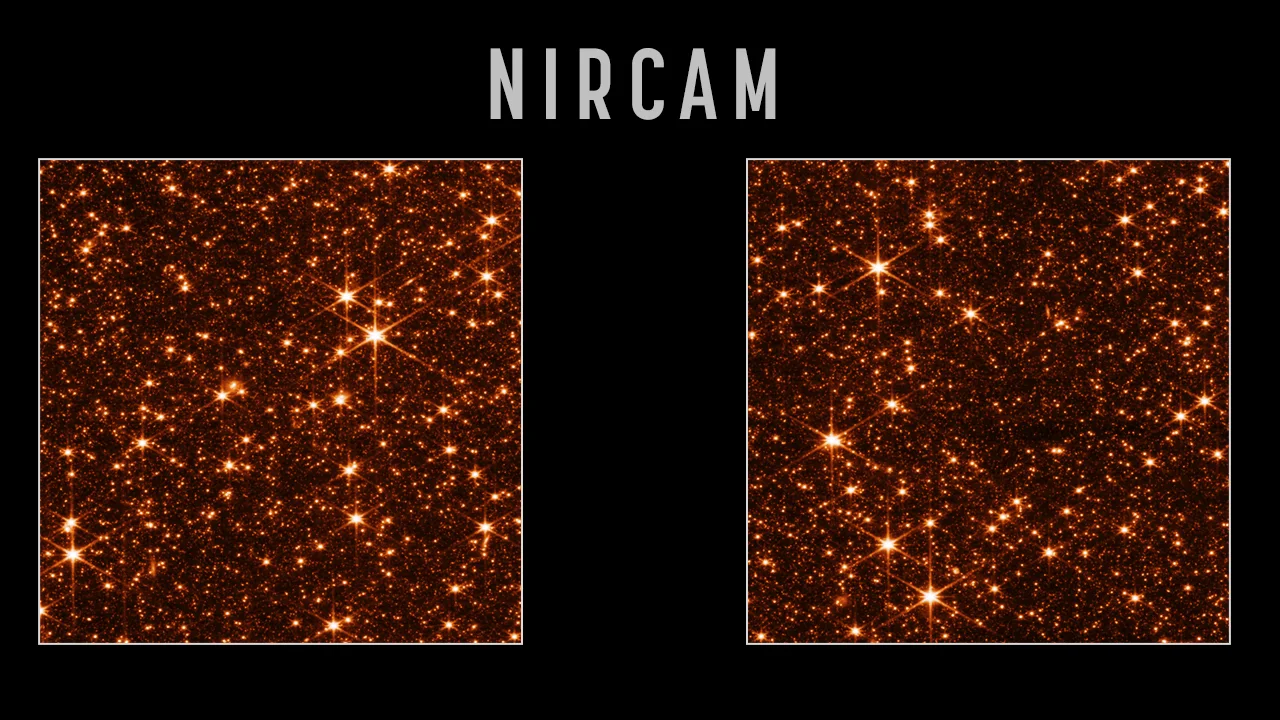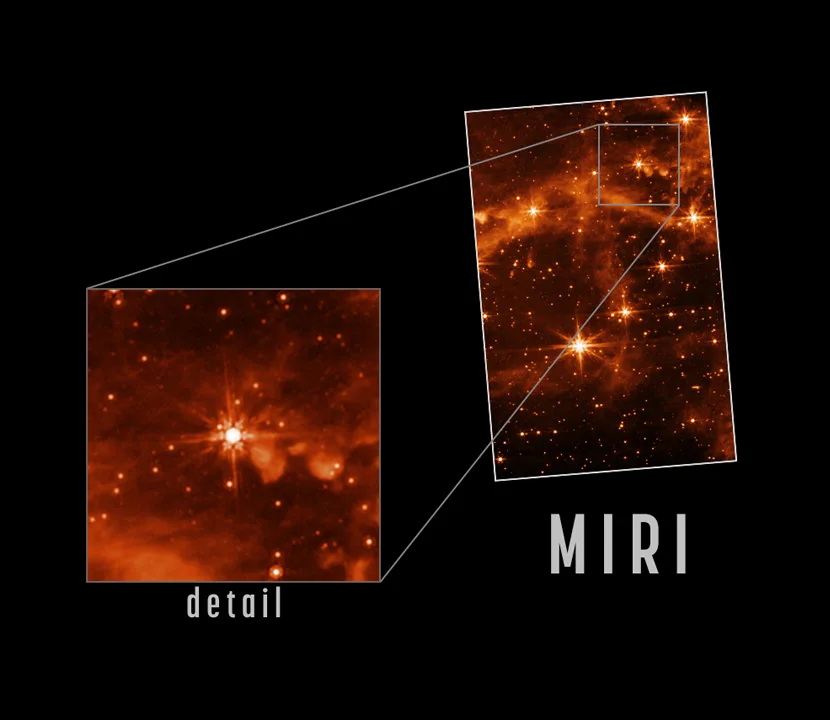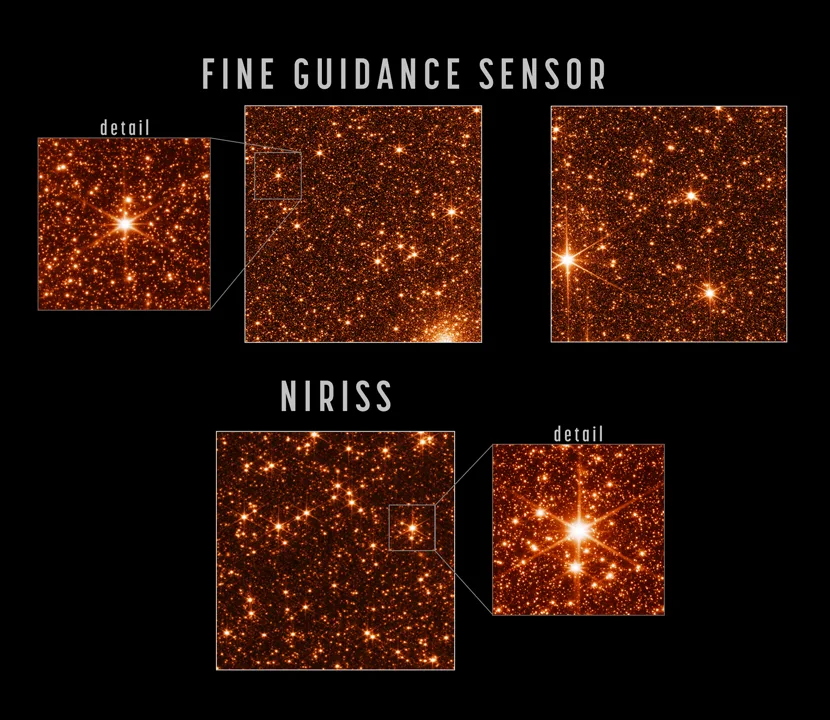
Cooled and aligned, Webb Telescope is one step closer to revealing the cosmos!
See the spectacular details of this powerful telescope's fully-aligned and focused imagery.
Webb is nearly ready!
The James Webb Space Telescope is now in its final stage of deployment, and we will soon be treated to its very first "wow" images of the universe. To celebrate the achievements so far, NASA released a small sample of what this amazing new telescope will show us.
According to NASA: "For this test, Webb pointed at part of the Large Magellanic Cloud, a small satellite galaxy of the Milky Way, providing a dense field of hundreds of thousands of stars across all the observatory's sensors. The sizes and positions of the images shown here depict the relative arrangement of each of Webb’s instruments in the telescope's focal plane, each pointing at a slightly offset part of the sky relative to one another."

This collection of engineering images reveals sharply focused stars in the field of view of each instrument on Webb. Credit: NASA/STScI
As shown above, Webb has four instruments that collect the light gathered by its immense multi-faceted mirror.
NIRSpec, the Near-Infrared Spectrograph,
NIRCam, the Near-Infrared Camera,
MIRI, the Mid-Infrared Instrument, and
FGS/NIRISS, Fine Guidance Sensor/Near InfraRed Imager and Slitless Spectrograph.
NIRSpec will split the light gathered from star or galaxies into its component parts (similar to what happens when you shine sunlight through a prism). This will provide astronomers with a whole host of information about these targets, including what they're made of.

The view from NIRSpec, along with an example of the fine details the instrument can pick out. Credit: NASA/STScI
NIRCam is Webb's primary camera, which will be used to find the earliest stars and galaxies that formed in the universe. Astronomers can also use it to study young stars in our own galaxy and look for faint planetary objects in the outer reaches of our solar system, known as Kuiper Belt Objects.

NIRCam reveals the depth of view Webb is capable of, showing off an array of stars and galaxies. Credit: NASA/STScI
MIRI is a combination camera/spectrograph, so it will be able to perform the tasks of both NIRSpec and NIRCam, but in a different part of the infrared spectrum, giving a different perspective on the targets.

MIRI detects not only stars, but also streamers of interstellar gas, even showing off the fine details of those nebulae. Credit: NASA/STScI
FGS/NIRISS, which is Canada's primary contribution to Webb, is two instruments in one. The Fine Guidance Sensor will help astronomers aim the telescope and keep it on target, even during hours of observations. NIRISS will be used to find and characterize exoplanets (planets orbiting other stars), and it will also read the composition of the atmospheres of these alien worlds, as they transit in front of their star.

The resolution of the Fine Guidance Sensor will allow pinpoint precision for Webb, while NIRISS will provide spectacular details of the targets of those observations. Credit: NASA/STScI
"These remarkable test images from a successfully aligned telescope demonstrate what people across countries and continents can achieve when there is a bold scientific vision to explore the universe," Lee Feinberg, the Webb optical telescope element manager at NASA's Goddard Space Flight Center, said in a statement.
As of now, each of these instruments is now fully in alignment with the telescope's mirrors. NASA also reports that each of them has now cooled down to their optimal temperature. For the science instruments, this is roughly 40 Kelvin, which is -233°C (very, very cold!). The Fine Steering Mirror needs to be even colder, down at just a few degrees Kelvin above absolute zero.
Read More: New pic from Webb has astronomers thrilled as telescope exceeds all expectations
HOW MUCH BETTER IS WEBB?
With the hype that we've seen so far, Webb has some big expectations to fulfill.
To show just how much better Webb's observations will be, astronomer Andras Gaspar found images taken by the Wide-field Infrared Survey Explorer (WISE) and Spizter Space Telescope that matched up perfectly with the alignment image taken by Webb's MIRI camera.
The evolution of these infrared images is amazing, and this provides us with a hint of just how good the new science observations from Webb are going to be!
WATCH BELOW: WEBB WILL REVEAL REMARKABLE THINGS ABOUT OUR UNIVERSE
WHAT'S NEXT?
Only one step remains before Webb is ready to "wow" us with its views of the universe.
"As part of scientific instrument commissioning, the telescope will be commanded to point to different areas in the sky where the total amount of solar radiation hitting the observatory will vary to confirm thermal stability when changing targets," Thaddeus Cesari wrote on the mission blog. "Furthermore, ongoing maintenance observations every two days will monitor the mirror alignment and, when needed, apply corrections to keep the mirrors in their aligned locations."











